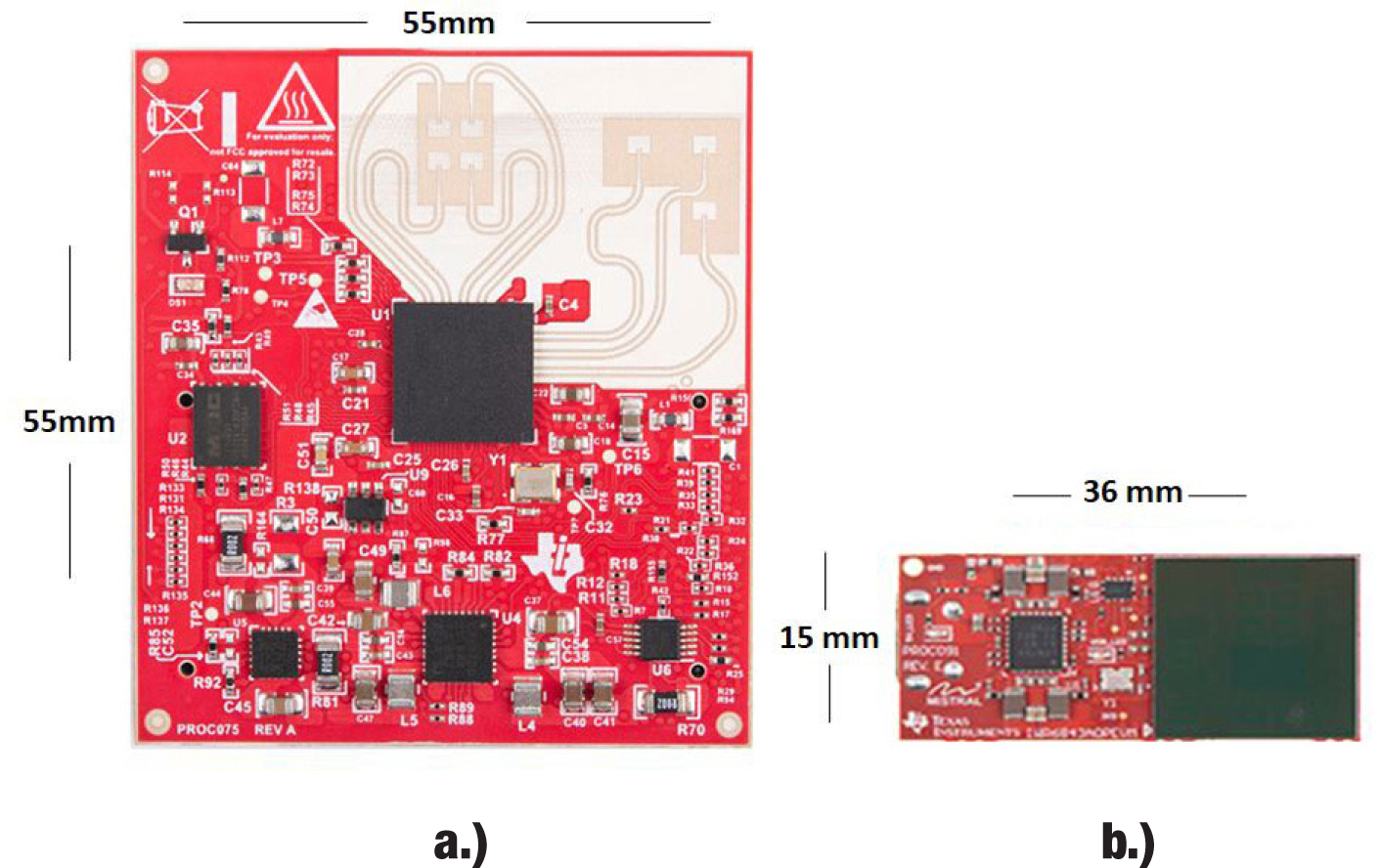SPRY334B april 2020 – may 2023 AWR6843AOP , IWR6843AOP
- 1
- Antenna-on-package Sensor Design
- Using TI mmWave Sensors with an AoP Design for Industrial 3D Sensing
- Robotics: Collision Prevention over a Wide Area
- Occupancy Detection: Simplified Sensing in Wall- and Ceiling-mounted Placements
- Automated Doors and Gates: Position- and Velocity-based Operation in Tight Spaces
- Conclusion
- Additional Resources
Antenna-on-package Sensor Design
In radio-frequency (RF) sensor-based systems, antenna design is just as important as sensor selection. The antenna configuration determines the maximum object range, the maximum field of view (FoV) and the resolution, which is important for several applications. With a single sensor and the right antenna configuration, an industrial system can cover a wide area for simultaneous object detection. Traditionally, mmWave antennas have been designed on a printed circuit board (PCB) using Rogers material to deliver high-accuracy sensing. Although highly effective, this does require RF expertise to design and manufacture an antenna to work alongside the sensor.
A new antenna-on-package (AoP) design simplifies board manufacturing and system design vastly, so that engineers with minimal RF expertize can integrate TI mmWave sensors into their systems with great ease. AoP sensors result in a 40% board reduction compared to a standard TI 60- GHz sensor and a 75% board reduction compared with other radar technologies. Figure 1 illustrates the size reduction possible when moving from a traditional 60-GHz mmWave sensor to a 60-GHz mmWave AoP sensor.
The key benefits of using TI mmWave AoP sensors include:
- Reduced system and manufacturing cost and complexity, for faster time to market.
- Flexibility to manufacture anywhere in the world with a simpler, cheaper FR4 design.
- Minimal RF expertise needed to design and develop a sensor solution in-house.
- Small form factor.
- Viable for industrial market applications that need a smaller sensor footprint.
- Higher efficiency due to zero board routing loss.
- Better range performance.
 Figure 1 Comparing a 60-GHz 55-Mm-by-55-Mm TI mmWave Evaluation Board with External Antenna; and the New 15-Mm-by-36-Mm Evaluation Board Design with TI’s mmWave AoP Sensor.
Figure 1 Comparing a 60-GHz 55-Mm-by-55-Mm TI mmWave Evaluation Board with External Antenna; and the New 15-Mm-by-36-Mm Evaluation Board Design with TI’s mmWave AoP Sensor.